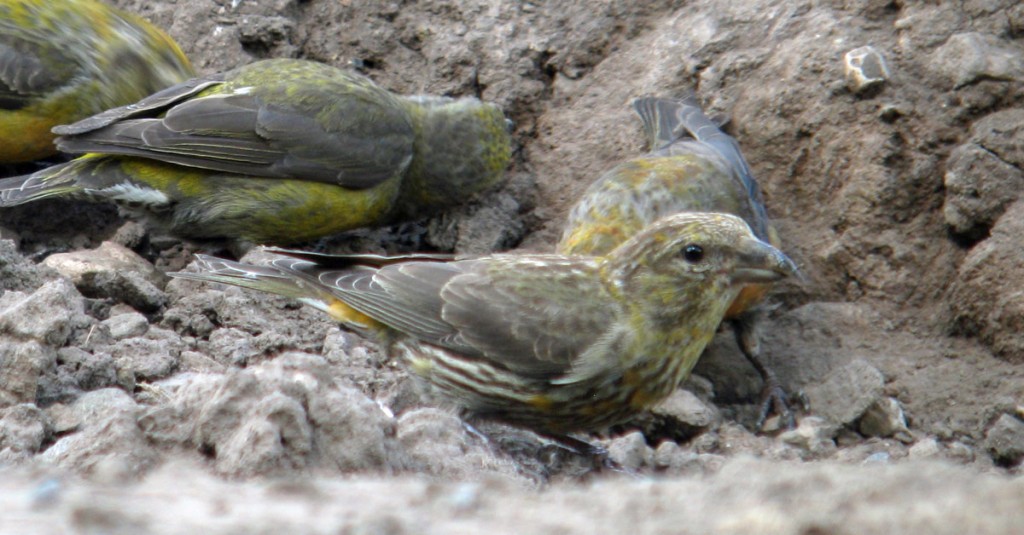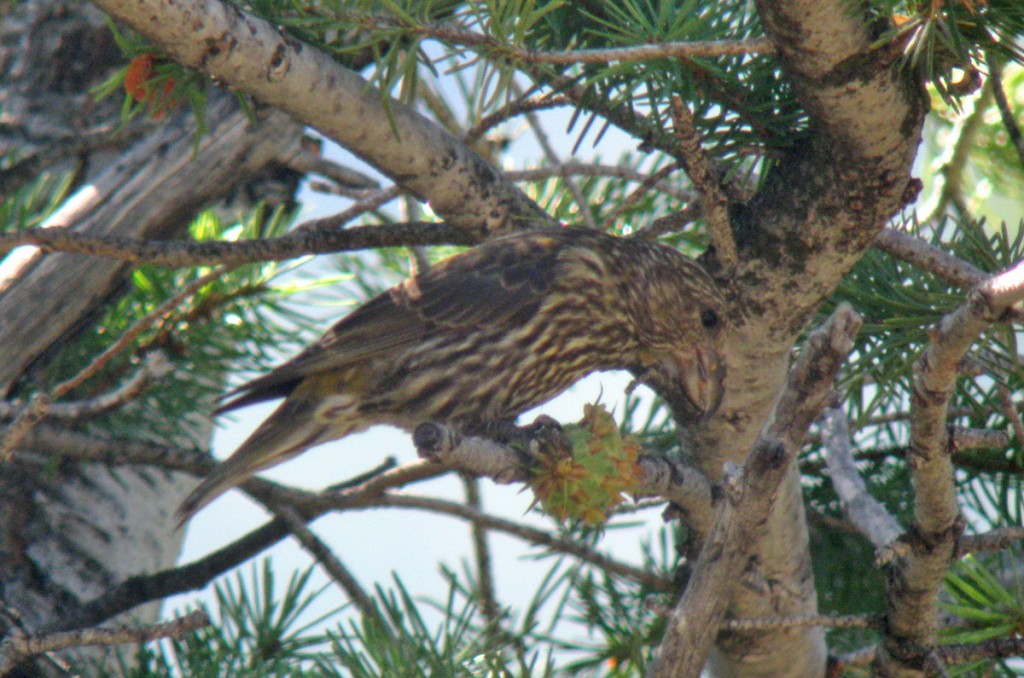In my last post I mentioned that the juvenal plumage of type 4 and type 2 Red Crossbills seemed to be consistently different, and here are two photos that illustrate the differences.


One of the first things you will notice whenever you have a chance to look at a large number of crossbills is the tremendous range of variation in plumage. Birds can be streaked, yellow, orange, or red, and seemingly any combination of these colors can show up on a single bird. It may be possible to tease some consistent differences out of that tangle of variation, and juvenal plumage seems like the best place to start.
In August 2010 in Montana I saw hundreds of Type 4 crossbills, many were juveniles and there was quite a bit of variation in their juvenal plumage from relatively pale with weak and fine streaking to darker, coarser streaking. Virtually all of them showed active molt with new yellow feathers coming in. I saw fewer Type 2 crossbills, most were juveniles, and all of those were in full juvenal plumage without molt (suggesting that they had fledged more recently). All were relatively dark with thick, coarse streaks from the head to the tail coverts. Even with all the variation in Type 4 crossbills there seemed to be little overlap in color, and the Type 2s repeatedly struck me as darker and more boldly-streaked.
The bottom line: I doubt that it will ever be possible to identify a crossbill to type by looking at its plumage, but there do seem to be some subtle differences in juvenal plumage that deserve further study.


Some evidence suggests that Type 2 might molt later than of any of the Types –they appear to regularly be able to nest further into the fall season into October than the other Types. Interesting stuff!